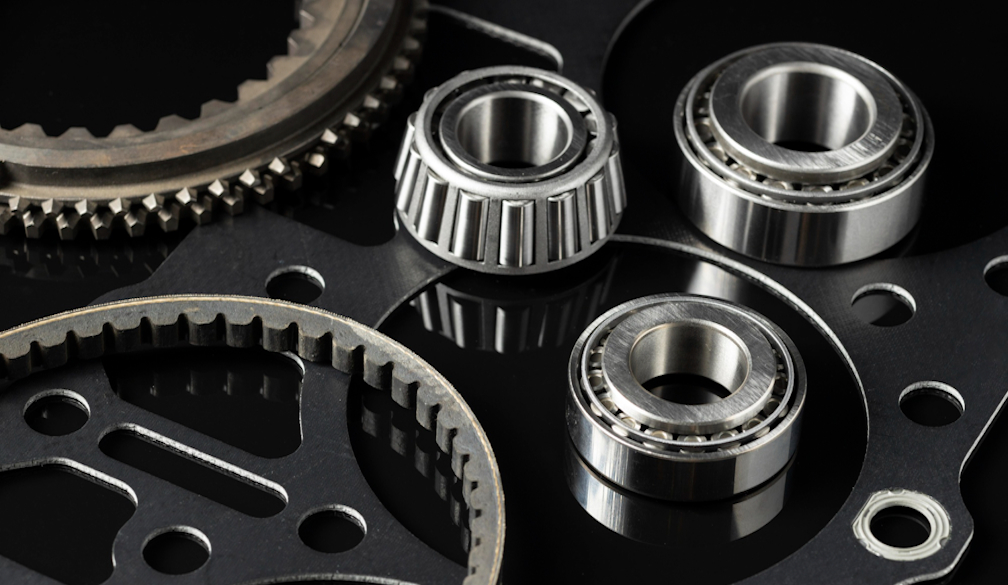The Different Uses of Ball Bearings

Bearings are often overlooked in their simplicity. They are the unsung heroes behind the smooth rotation of countless machines and devices. A ball bearing is a mechanical component designed to reduce friction and enable smooth rotational motion by using small, spherical balls arranged between two concentric rings. From the automotive sector to aerospace engineering, ball bearings play a crucial role, enhancing efficiency, durability, and overall performance. Let’s take a look at some of their main uses.
Automotive
In the automotive realm, ball bearings are an extremely common component, ensuring the seamless operation of wheels, transmissions, and various engine components. By reducing friction between moving parts, they contribute to fuel efficiency and extend the lifespan of critical components. Additionally, their use in steering columns and suspension systems enhances overall vehicle stability and control.
Industrial machinery
Within industrial machinery, ball bearings are fundamental components, facilitating the smooth rotation of shafts and spindles in manufacturing equipment. From conveyor systems to large-scale machinery in factories, ball bearings enable precise movement and reduce wear and tear, minimising downtime and maintenance costs.
Aerospace
In the aerospace industry, where precision and reliability are paramount, ball bearings find applications in aircraft engines, landing gear, and control systems. Their lightweight design and ability to withstand high speeds make them ideal for ensuring the smooth and reliable operation of critical aerospace components.
Medical equipment
The medical field benefits from the precision and reliability of ball bearings in various applications. From diagnostic laboratory equipment to surgical tools, ball bearings contribute to the smooth movement of components, ensuring accurate readings and precise surgical procedures.
Renewable energy systems
The renewable energy sector harnesses the power of ball bearings in wind turbines and solar tracking systems. In wind turbines, ball bearings facilitate the rotation of blades and ensure the efficient conversion of wind energy into electricity. In solar tracking systems, they enable the precise movement of solar panels to maximise energy absorption.
Marine
Even in the harsh conditions of marine environments, ball bearings prove their resilience. They are integral to marine propulsion systems, steering mechanisms, and winches, ensuring smooth operation even in the presence of saltwater and challenging weather conditions.
Consumer electronics
Inside our everyday devices, ball bearings silently contribute to their functionality. Hard drives, printers, and cameras all rely on ball bearings to support moving parts, providing the necessary precision and reducing friction for optimal performance.
Railway
In railway systems, ball bearings play a pivotal role in ensuring the smooth and efficient operation of trains. These precision-engineered bearings are strategically integrated into the wheelset assemblies, where they enable the smooth rotation of wheels at elevated speeds, ensuring minimal friction and optimal energy efficiency.
HVAC systems
In the realm of HVAC (Heating, Ventilation, and Air Conditioning) systems, ball bearings are essential components that facilitate smooth and efficient operation. These bearings are commonly employed in various moving parts within HVAC units, such as fans and blowers. By reducing friction, ball bearings contribute to the seamless rotation of these components, ensuring optimal air circulation and temperature control.
Food processing
In the intricate landscape of food processing equipment, ball bearings play a crucial role in sustaining operational efficiency and hygiene standards. These precision components find application in various machinery, such as conveyors, mixers, and packaging equipment. They contribute to seamless operations by ensuring smooth movement.
The versatility of ball bearings is a testament to their engineering brilliance. Whether in the skies, on the road, or within the confines of a factory, these unassuming components play a pivotal role in enhancing the efficiency, reliability, and longevity of various systems. As technology continues to advance, the demand for specialised ball bearings tailored to specific industries will likely grow, further cementing their status as indispensable components in the machinery of modern life.






